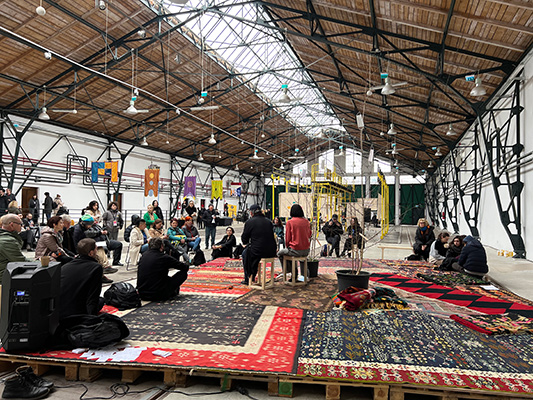
The kilims on the platform generate a vernacular space populated by a multitude of abstract signs and symbols of renewal, the tree of life, nature, immortality, fertility, feminine, masculine, marriage, animals and plants, many of the signs also having an apotropaic character, which wards off evil spirits. Even if these weavings come from different geographical areas - Oltenia, the Balkans, Anatolia, Bessarabia, the Caucasus, Persia/Iran, they evoke a common, archaic cultural heritage that transcends spatial and temporal boundaries, a heritage that now, when we walk or look at them, brings us closer to the other finite entities that once looked or walked on these kilims imagined by the wonderful weavers.
The installation will contain a central element, a living tree through which we want to invoke the idea of nature's renewal and relate this archaic motif – the tree of life – to the present moment, to the increasingly complicated years we are all going through, of pandemics, war and climate change. The tree presented in the installation, a birch bought from a nursery near Timisoara – the commodity tree – is freed from its economic meaning, it becomes a tree that symbolically mediates with natural forces, a tree that speaks to us about nature and nature's rights. At the end of the exhibition, in spring, the birch tree will be planted, and become part of the natural cycle again.
This space will function as a place for discussion, not just an art installation. Oana Mateescu, researcher in the anthropology of work and Ovidiu Tichindeleanu, philosopher and cultural theorist, will activate the idea of school by giving presentations followed by discussions on February 18, 2023. In their presentations, they will talk about decolonisation and the possibility of a pluriversal political project, about the problem of industrialisation, economic production, and how the economy articulates with the reality of climate change, but also with the social, political and social resettlement and fractures that define the present. A further activation of the space will be made possible through collaboration with the artist Harun Morrison and the presentation in the context of the installation of his work Environmental Justice Cards, a series of playing cards with questions that can activate and animate discussions about climate throughout the exhibition.






